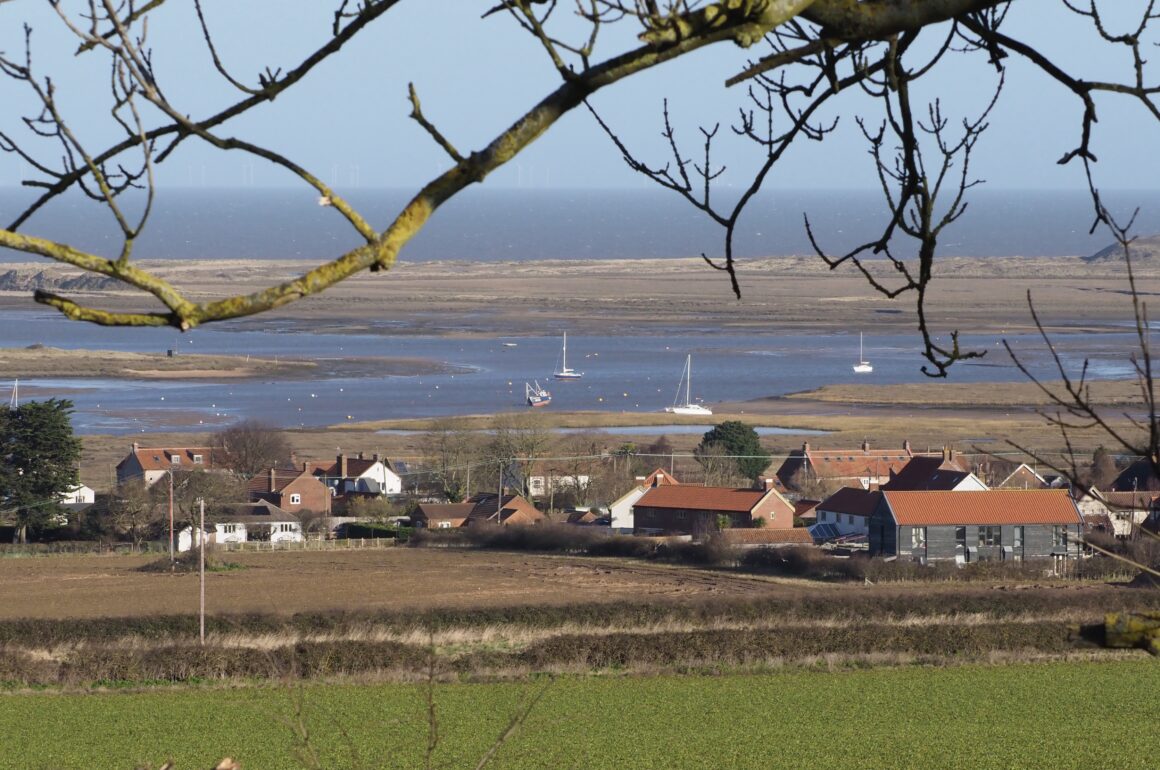
There’s something improbably delicious about glistening, glutinous mud, freshly washed by a receding tide. I was sitting in the insulated warmth of my car, watching the sea slide silently out of the creeks, gutters and drains it had drowned completely only hours before. The moon was full, so its gravitational pull was at its greatest and the tide had been a big one, completely covering the saltings and even the part of the harbour where I was parked. It was now falling fast, with the bows of the moored boats pointing hard to the shore. There’s an old country saying that time and tide wait for no man. It’s true. Once the tide has turned, there’s no stopping it.
For the many birds that depend on the saltings for their food, high tide is a time for roosting and waiting. But once the tide starts to drop, uncovering the mud once again, it’s time for action. Flocks of Dunlins turned and twisted over the chocolate-coloured mud, their white bellies momentarily catching the golden light of the low winter sun. They landed suddenly with perfect synchrony, and all start feeding with hungry urgency.
If you are a birdwatcher or bird photographer, there’s no finer place to be than an estuary when the tide is falling. I was at Brancaster Staithe, a small village on the North Norfolk coast. This stretch of coastline remains one of the most beautiful and least spoilt of anywhere in England, thanks to the extensive salt marshes that stretch all the way along the coast from Holme to Blakeney, a distance of over 20 miles. In recent years it’s an area that has become increasingly popular with tourists, but it’s always attracted great numbers of birds, making it one of Britain’s top birding spots.
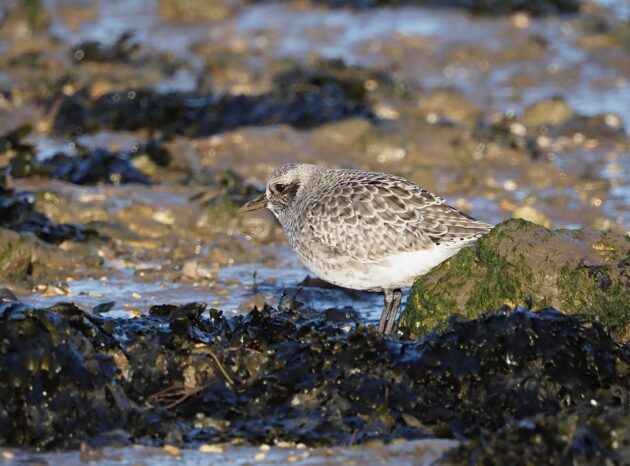
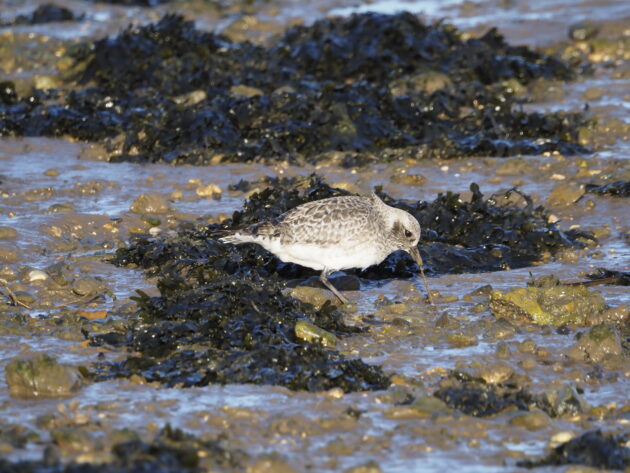
Though it may draw hundreds of birdwatchers every day, there are lots of sites to watch from, and perhaps surprisingly Brancaster Staithe never seems to draw the crowds: for much of the time I was the only observer. The first bird to draw my eye was a fine adult Grey Plover, or what is known in America as a Black-bellied Plover, sitting characteristically hunch-backed just a few yards from my car, on the edge of the tide. It was obviously happy with where it was, as it didn’t move much. I watched it run forward to tug a fine, fat lug worm out of the mud, which it eventually swallowed with what one has to assume was relish. Though these plovers are common on the North Norfolk coast, their nearest breeding grounds are far to the north. A few do breed in Europe, on the extreme north-east of European Russia.
For most of the time they are in Britain Grey Plovers live up to their name by being grey: it’s not until late May that they transform into one of the most handsome of all shorebirds, with silver-spangled back contrasting with solid black underparts. Ringed Plovers also have winter and summer plumages, though the difference is not nearly as marked. A single Ringed Plover was keeping the Grey Plover company, allowing me to compare the two. The latter is half the size of the Grey, but with its stout beak and prominent eyes shows a distinct family likeness.
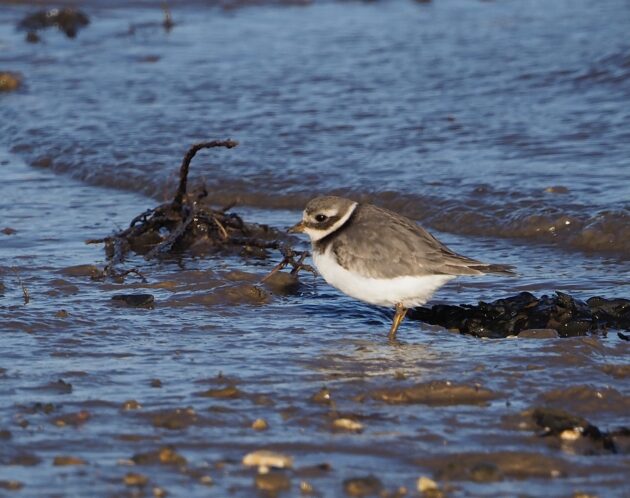
Brancaster is always a reliable site for Black-tailed Godwits, but when I first arrived there were none to be seen. Then, suddenly, two flocks came racing in, twisting and turning in unison until landing on a recently exposed mud flat. All were in dull-grey winter plumage, but readily identifiable in flight by their black-and-white wings and tails.
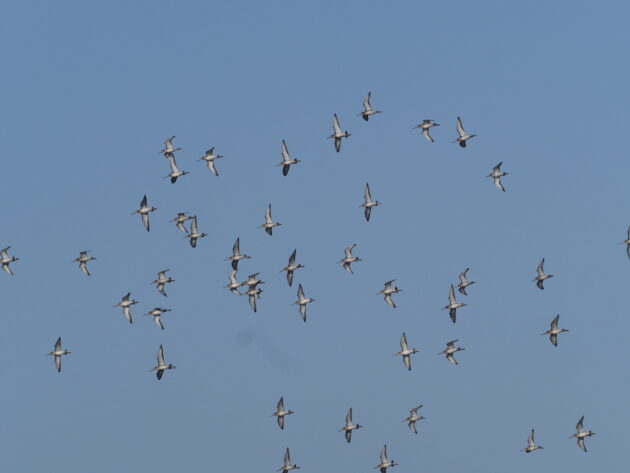
A couple of Turnstones were foraging closer to the car: the Turnstones here have learnt that cars can be a source of food, and a chip thrown from a car window saves having to turn stones in search of your lunch. These tough little waders are notorious for eating almost anything. Many years ago the journal British Birds published a note from an observer who had watched Turnstones scavenging from a human corpse that had washed up on the tideline.
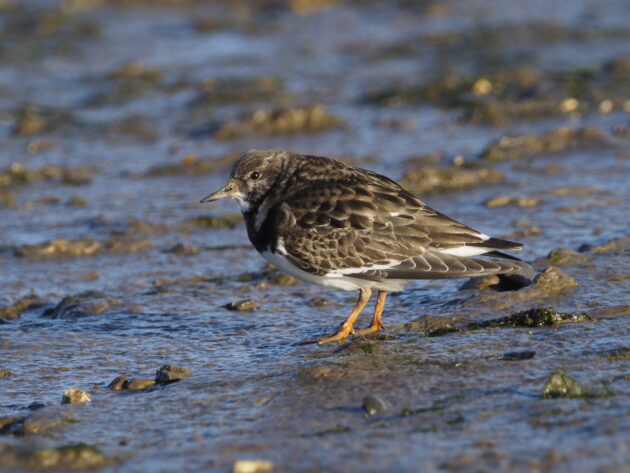
Like the turnstones, Brancaster’s gulls were also waiting expectantly for any scrap that might be thrown for them. I noted that the Black-headed Gulls were starting to show signs of their heads darkening – by the end of February most will be sporting smart chocolate-coloured caps. Black-headed Gulls are so common that they rarely earn a second look, but their wonderfully bright, orange-red legs really do appear to be made from plastic. One or two adult winter Common (Mew) Gulls were also loitering, along with a single Herring Gull. It is anthropomorphic to suggest it, but compared with the Common and Black-headed Gulls there’s something of the thug about a Herring Gull. It’s that cruel eye and heavy-duty beak that do it.
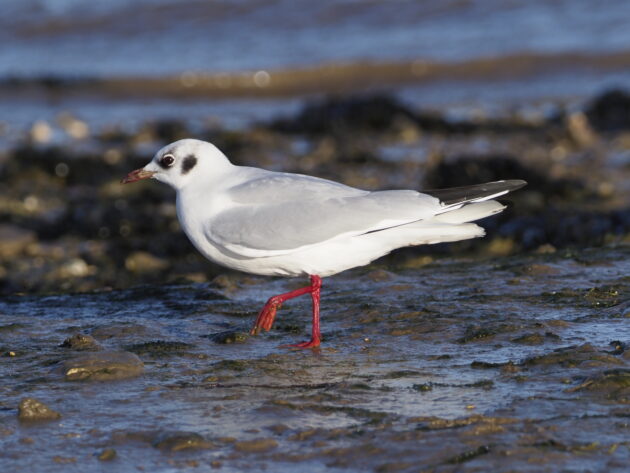
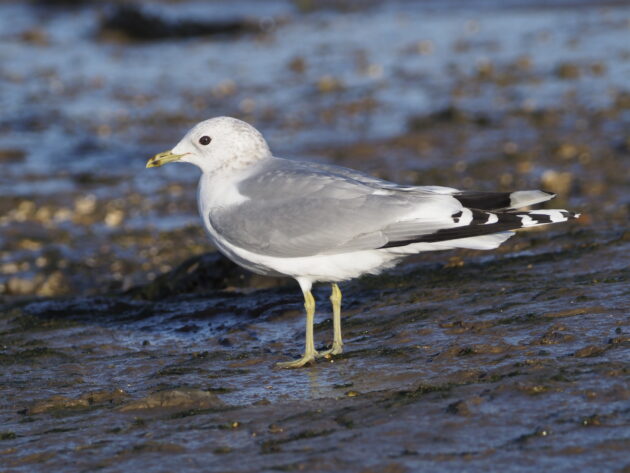
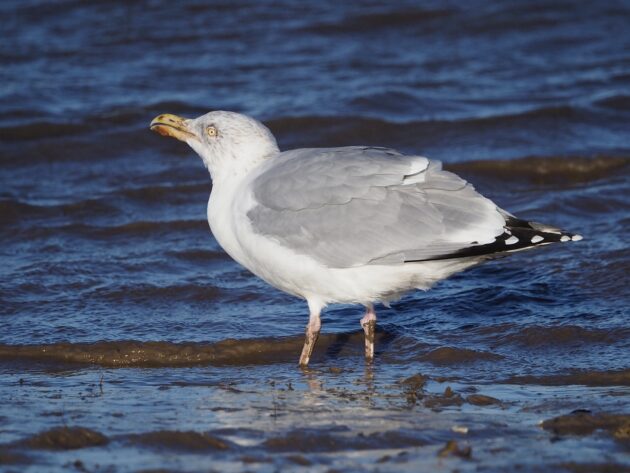
In contrast to the gulls and waders, all the ducks were dressed in their smartest finery. Their different breeding strategy explains why they acquire their breeding plumage so much earlier, for they pair on their wintering grounds, unlike the waders which don’t do so until they are on their nesting grounds.
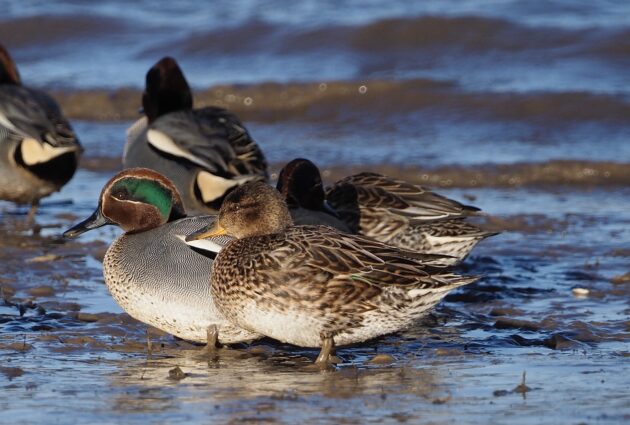
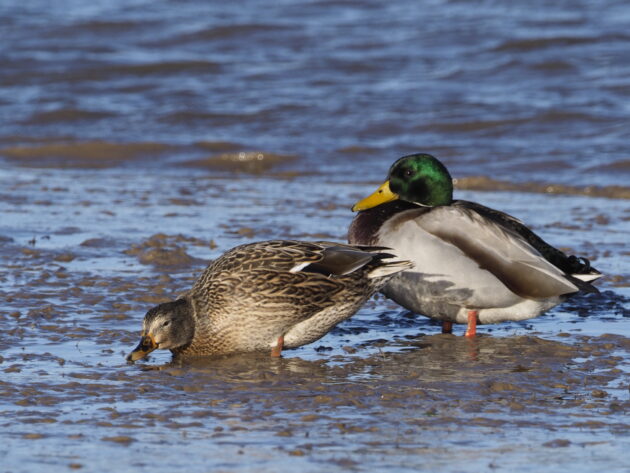
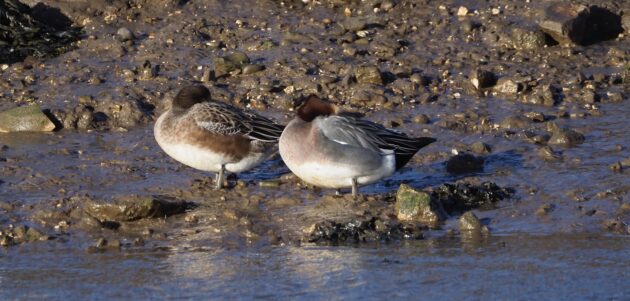
Teal and Mallard were dabbling on the water’s edge, the drakes looking splendid in the sunshine. Once a female Red-breasted Merganser flew past, but there was no sign of the more flashy drake. There were several Wigeon to be seen, too, but all were snoozing with heads under wings. As the tide fell, it exposed sand banks that attracted small parties of garrulous Brent Geese. These were dark-bellied birds from Russia.
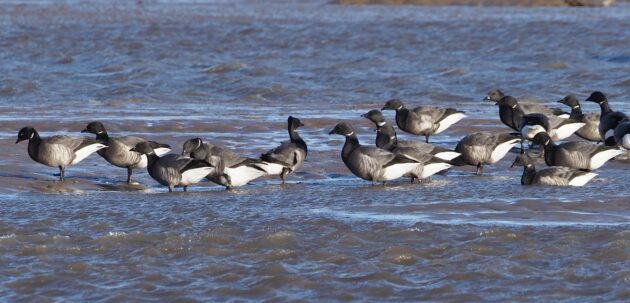
Brent are abundant along the Norfolk coast, invariably proclaiming their presence with their guttural chattering, so unlike the higher-pitched calls of the Pinkfeet. Both species of geese have increased hugely in recent years. Sixty years ago, the biggest flock of Brents recorded in north Norfolk only numbered a couple of hundred birds. Today many thousands spend much of their year there, arriving in September and not departing for their breeding grounds in arctic Russia until late May.
Norfolk’s Pinkfooted geese are another success story. After the Second World War these geese completely deserted Norfolk, scared away by an anti-aircraft firing range at Stiffkey (a key roost site) and the ploughing of the fresh marshes. It wasn’t until the 1980s that they started wintering regularly again, and today as many as 100,000 spend their winters in the area. Unlike the Brent, their stay is much shorter, as the big numbers depart at the end of January when the sugar-beet harvest finishes. The geese feed on the unwanted tops of the sugar beet that are left in the fields when the beet is harvested, a clean-up service that the farmers are happy with.
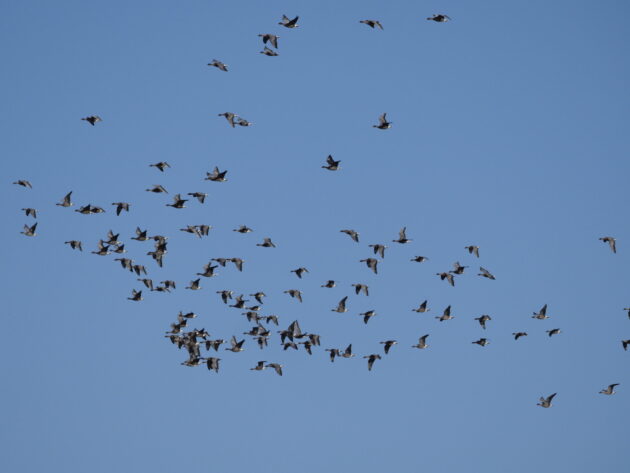
My visit to Brancaster concluded with a magnificent fly-over of Pinkfeet as skein after skein passed high overhead, all heading west. Estimating their numbers was difficult, but I reckoned that close to 10,000 geese must have flown over me in long, wavering lines. In Britain, wildlife spectacles don’t get much better than that.











Another great read David. I closed my eyes and was there.